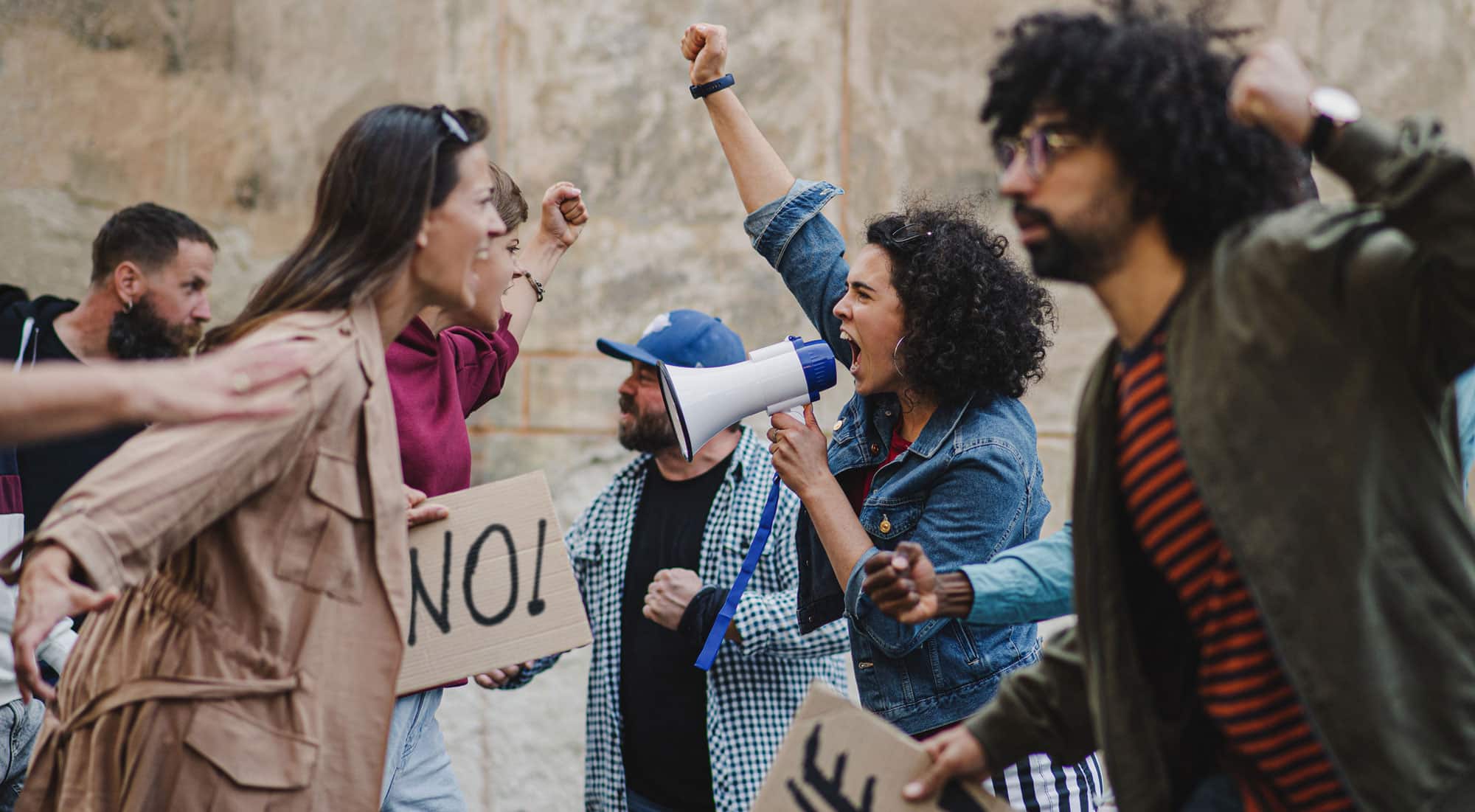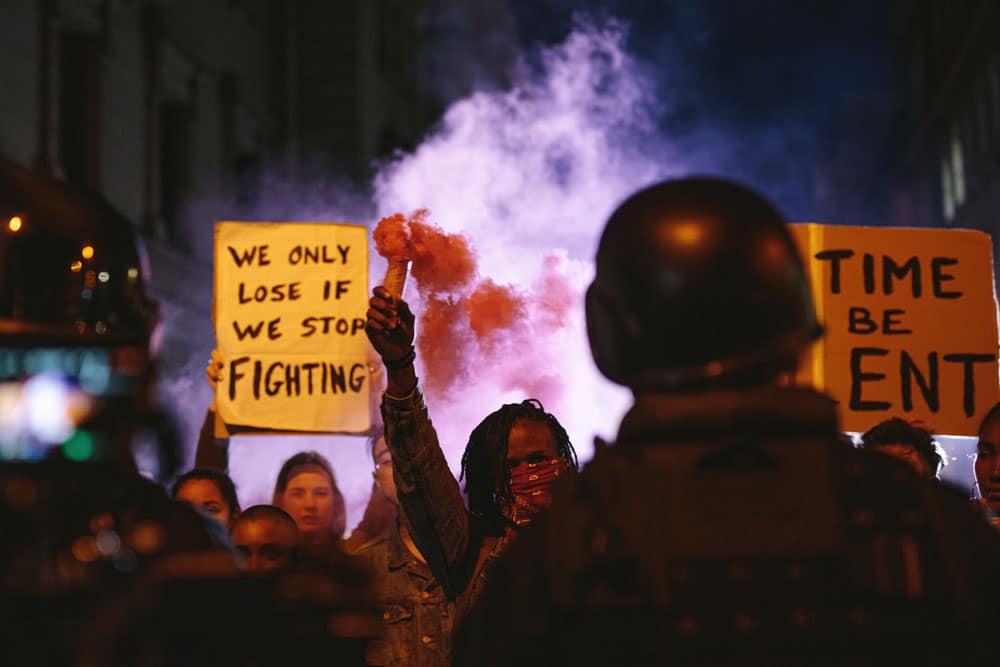
Is Rioting Rooted in Trauma?
What turns a protest into a riot? Studies on the psychology of crowd behavior have revealed a number of important factors that cause demonstrations to become violent. According to a report published by the American Psychological Association (APA), violent acts can at times be related to psychological disorders, but many people with mental health issues don’t become violent. Are riots and mental health actually connected? Is there a realistic link between riots and trauma?
Both internal and external factors combine to produce riots like those seen during the Black Lives Matter movement, at the US Capitol in January 2021, and during the women-led demonstrations against the government in Iran, to name a few.
In each of these, as in other protests, some participants retained a nonviolent approach. However, others set fire to objects, had physical confrontations with the police, destroyed property, and committed criminal acts. How is it that some individuals can remain peacefully part of the crowd and others respond with violence?
Riots and Mental Health
To explore the relationship between riots and mental health, or even riots and trauma, it’s necessary to learn what inspires violence. Research reveals that both genetic and environmental factors can predispose a person to violent behavior. A research article published by The Jackson Laboratory shared that “the genetic contribution to delinquency” is 50%, and “environmental influences” make up the other 50%.
Research reveals that both genetic and environmental factors can predispose a person to violent behavior.
In other words, a person who is predisposed to violence, perhaps by their experience of trauma, is only more likely to act out when that factor is combined with a certain gene expression or biological state, and vice versa. Single stressors don’t typically result in violent behavior, but a multiplicity of psychological, environmental, and even biological factors combine to make violence more likely.
For example, The Washington Post conducted an analysis of people facing charges from the Capitol riot that showed that the majority (60%) had experienced financial difficulties within the past 20 years, such as bankruptcies, foreclosure, or bad debts. Financial difficulties themselves do not precipitate the likelihood of violence; but when combined with other factors like childhood trauma, mental health issues, or additional life stressors, the potential for violence increases.
The Psychology of an Angry Crowd
Understanding mental health during riots is also critical. In an article about mob mentality featured in The New York Times, an expert in crowd behavior explains that an angry mass is not one unit, but a variety of groups “doing different things, for different reasons.” In other words, we bring expectations and intentions into a crowd, where our behavior may be activated in ways we did (or did not) expect. How a crowd responds doesn’t just depend on what people bring into it, but on how it is mobilized.
The article explains that a crowd is not a unified thinking being, but an unthinking instrument that is often in the hands of one or more mobilizers. With leadership, a crowd is instructed, incited, and even manipulated to do things; what those things are depends on the groups within the crowd and the individuals who are influenced by certain stressors.

One of the common factors among protests that turn into riots is anger. According to a study examined by Business Insider, anger gives people “a more adversarial relationship with authorities.” Anger can be like propane: By itself, it doesn’t precipitate the fire of violence; but other contributors may become the spark that ignites the flame. The more anger there is within a crowd, the more reactive it is when those other factors come into play through the acts of certain leadership, groups, and individuals.
Childhood Trauma and Anger in Adulthood
Where does extreme anger come from? It can have a number of different sources, with childhood trauma being one of them. Many of the rioters involved in the January 6 attack were noted by The New York Times to have experienced childhood trauma. According to the US Department of Veterans Affairs, childhood trauma affects the way we learn how to manage our emotions. Anger and rage can result from a hampered ability to regulate how we feel, which alters the way we respond to the world. Trauma has a variety of effects that cause this.
Anger and rage can result from a hampered ability to regulate how we feel, which alters the way we respond to the world.
Childhood trauma and anger in adulthood are connected, but so are trauma and a propensity to respond in violence (based on the fear of danger). The Body Keeps the Score author and Meadows Senior Fellow Dr. Bessel van der Kolk explains how childhood trauma can influence the way a person responds in a crowd:
“Once you get abused, you are wired for danger. You’re wired to see the world as being dangerous. And you’re wired to see yourself as a victim of outside forces, because that’s how it started,” says Dr. van der Kolk. “And then we are also imitative creatures. And so people [who] have been brutalized oftentimes have learned how to brutalize other people in the same way.”
Dr. van der Kolk continues, “And so you learn as a kid, the guy who’s the loudest, the strongest, the drunkest, is who makes the rules here. I am not going to be a good kid; I’m going to be just like this person over there. Because when he starts yelling, everybody does what he does.”
Experience Healing at The Meadows Outpatient Center
If you are dealing with the effects of trauma, stress, anxiety, and anger, healing is possible. At The Meadows Outpatient Center, we can address these issues and many others to help you find the road to recovery. Contact us today to learn more.
.

Reach Out Today
Convenient, comprehensive care is available. Your next chapter can start right now.